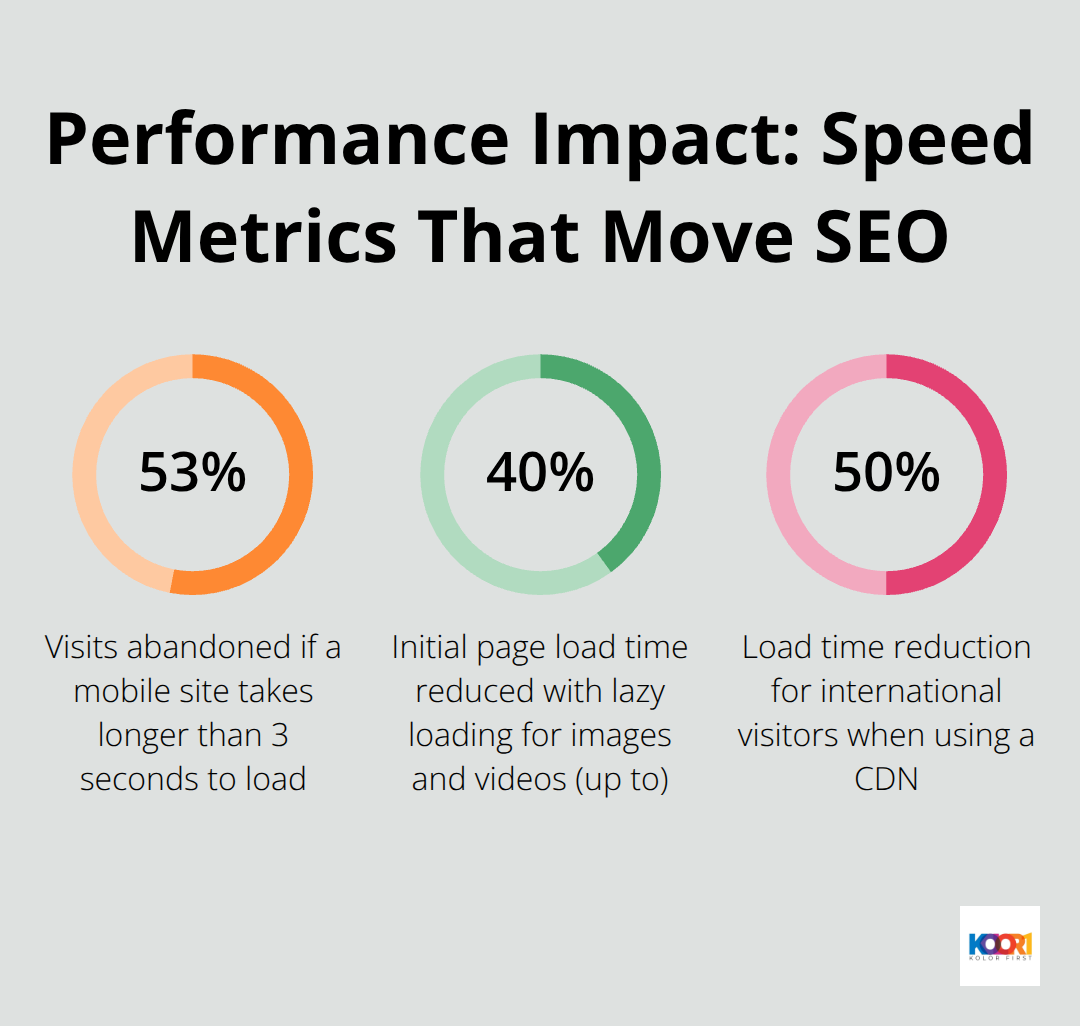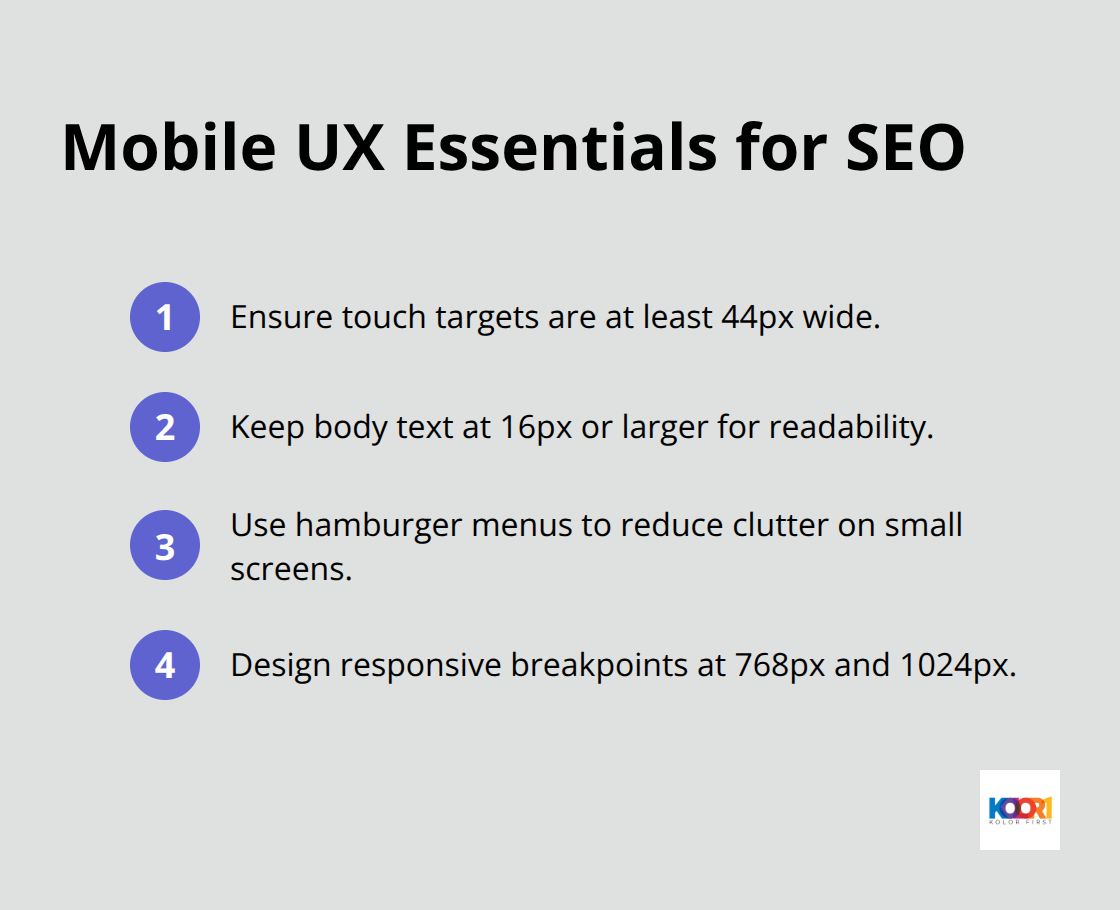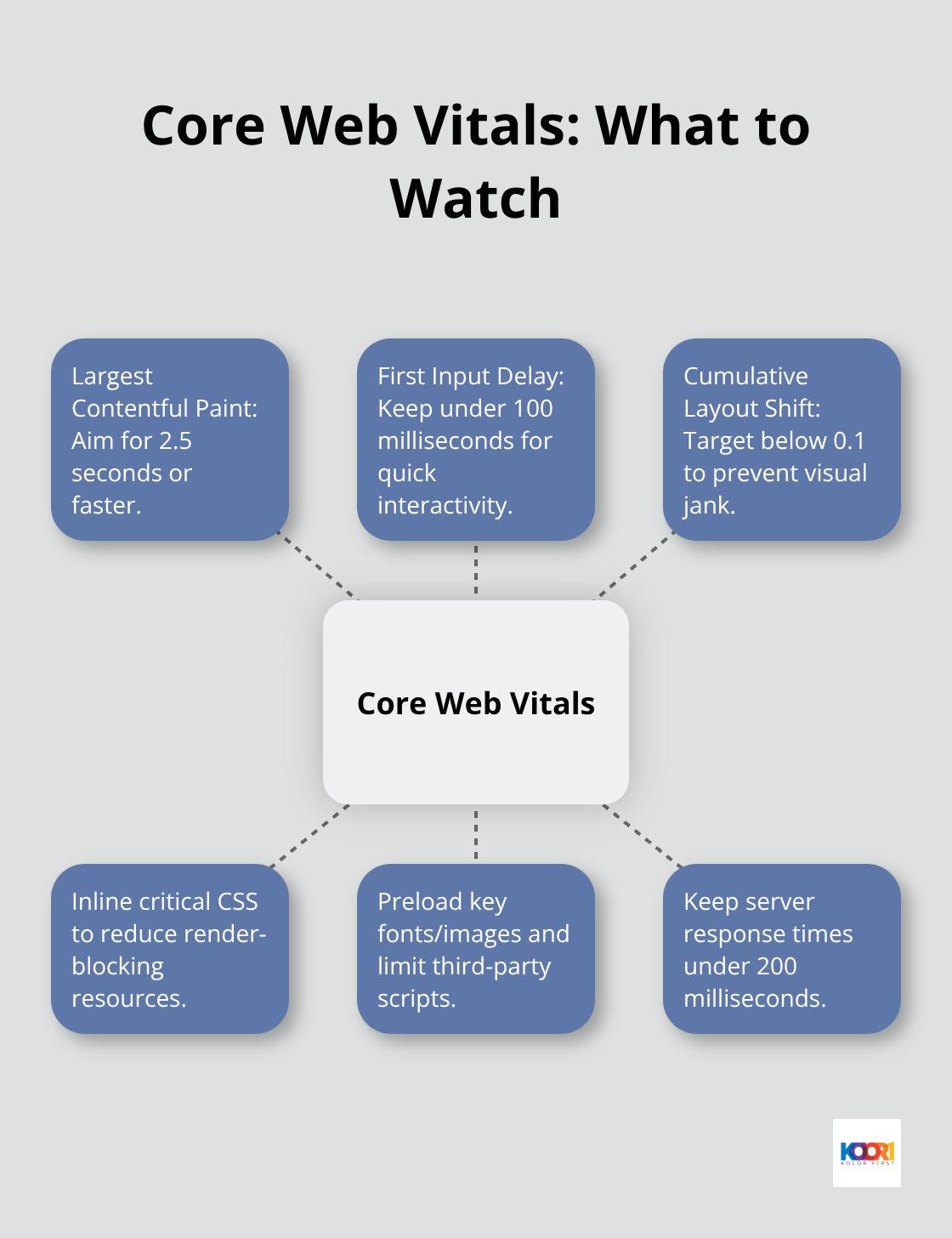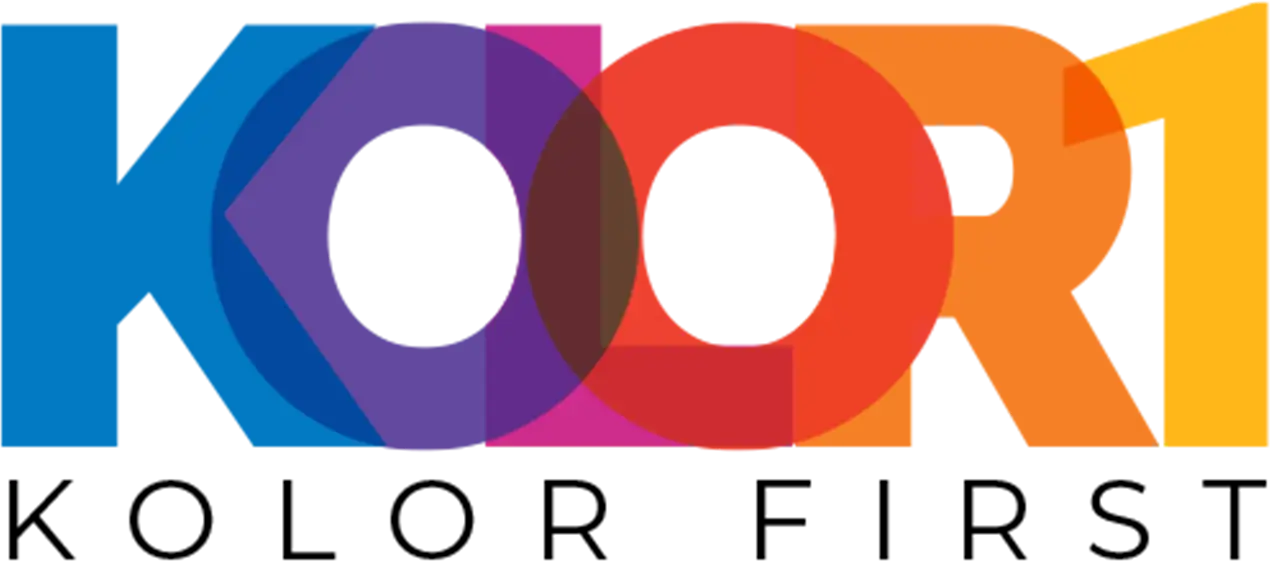Web designing and SEO work together to create websites that both users and search engines love. When these two disciplines align, websites see dramatic improvements in rankings and user engagement.
At Kolorfirst LLC, we’ve seen firsthand how integrated design and SEO strategies deliver measurable results. Sites that prioritize both visual appeal and search optimization consistently outperform those that focus on just one area.
Web Design Elements That Impact SEO
Site Speed and Performance Optimization
Page speed determines whether visitors stay or leave within seconds. Google research shows that 53% of visits are abandoned if a mobile site takes longer than 3 seconds to load. We compress images with WebP format, which reduces file sizes by 25-35% compared to JPEG without quality loss.
Lazy loading for images and videos cuts initial page load time by up to 40%. This technique loads content only when users scroll to view it. Minified CSS and JavaScript files remove unnecessary characters, typically reducing file sizes by 15-20%.

Content delivery networks distribute your site across multiple servers globally, reducing load times by 50% for international visitors.
Mobile-First Responsive Design
Mobile-first design has become non-negotiable since Google’s mobile-first indexing in 2018. Sites without responsive design lose 67% of potential mobile traffic according to Google Analytics data. Touch targets must be at least 44 pixels wide for proper mobile interaction (smaller targets frustrate users and increase bounce rates).
Text size should never fall below 16 pixels on mobile devices to maintain readability. Navigation menus work best as hamburger menus on mobile, reducing screen clutter while maintaining functionality. Responsive breakpoints at 768px and 1024px accommodate most device sizes effectively.

Clean URL Structure and Navigation
Clean URLs with descriptive keywords perform 45% better in search results than generic numbered URLs. Site architecture should keep all content within 3 clicks of the homepage. Breadcrumb navigation helps both users and search engines understand page hierarchy, improving crawlability by 23%.
Internal links between related pages distribute page authority effectively. Anchor text should describe the destination page content accurately rather than using generic phrases like “click here.” These structural elements create the foundation that search engines need to understand your content hierarchy and guide users toward conversion actions.
SEO Fundamentals for Web Designers
Keyword Research and Content Optimization
Smart keyword research shapes every design choice from navigation labels to button text. Tools like Ahrefs reveal that long-tail keywords are search queries that get a small number of searches per month and tend to be longer and more specific than their “head” counterparts. We analyze search volume and competition before we create wireframes, then place high-value keywords in prominent design elements like headers and call-to-action buttons.
Primary keywords belong in H1 tags, while secondary keywords work best in H2 and H3 headers. Keyword density should stay between 1-2% in body text to avoid penalties that can negatively impact rankings.
Meta Tags and Header Structure
Title tags under 60 characters get full display in search results, while longer titles get truncated and lose click-through potential. Meta descriptions between 150-160 characters typically perform better for click-through rates than shorter versions.
H1 tags must contain your primary keyword and match user search intent exactly. Header hierarchy follows strict rules: one H1 per page, multiple H2s for main sections, and H3s for subsections. Schema markup can increase click-through rates significantly. Rich snippets from proper schema implementation can substantially boost your organic traffic.
Image Optimization and Alt Text
Alt text serves dual purposes: accessibility compliance and keyword opportunities. Images with descriptive alt text perform better in Google Images search results. File names like smartphone-repair-guide.jpg outperform generic IMG_1234.jpg in image search rankings.
WebP format reduces file sizes by 25-34% while maintaining visual quality that users expect. Image compression tools like TinyPNG typically shrink files significantly without noticeable quality loss. Lazy load implementation cuts initial page load time substantially, which directly improves Core Web Vitals scores that Google uses for ranking decisions.
These SEO fundamentals create the foundation, but technical implementation determines whether your optimized design actually performs in search results.
Technical Integration Strategies
Schema Markup Implementation
Schema markup transforms how search engines understand your content. Adding structured data can enable search results that are more engaging to users and might encourage them to interact more with your website. JSON-LD format works best for implementation since it sits in the head section without affecting page layout. Product schema for ecommerce sites generates rich snippets that show prices, reviews, and availability directly in search results.
Local business schema includes critical details like address, phone numbers, and operating hours that Google displays in local search panels. FAQ schema creates expandable question sections in search results, often doubling click-through rates according to Search Engine Land data. Recipe schema displays cooking times, ratings, and ingredient lists that drive significant traffic to food blogs. Event schema shows dates, locations, and ticket information for venues and organizations.
Core Web Vitals and User Experience Signals
Core Web Vitals directly impact search rankings since Google’s Page Experience update in 2021. Largest Contentful Paint should load within 2.5 seconds, while First Input Delay must stay under 100 milliseconds. Cumulative Layout Shift scores above 0.1 trigger ranking penalties that hurt visibility.
Critical CSS inline reduces render-blocking resources that slow page display. Preloaded key fonts and images cut loading time by 20-30% on average. Third-party scripts like social media widgets often cause the biggest performance issues. GTmetrix data shows that removed unnecessary plugins improve Core Web Vitals scores significantly. Server response times over 200 milliseconds create bottlenecks that affect all other metrics.

Internal Linking and Site Architecture
Strategic internal links distribute page authority throughout your site effectively. Pages with 5-10 internal links typically rank higher than those with fewer connections. Anchor text should match target page keywords naturally rather than generic phrases (avoid “click here” or “read more”). Hub pages that link to related content clusters help search engines understand topic relationships and boost topical authority.
XML sitemaps guide search engine crawlers to important pages, especially for larger sites with deep navigation structures. Orphaned pages without internal links often get ignored by search engines completely. Footer links provide consistent navigation but carry less SEO weight than contextual body links. Category and tag structures create logical content groups that improve both user experience and crawl efficiency. E-commerce SEO strategies require particular attention to product page optimization and digital marketing tools integration for maximum effectiveness.
Final Thoughts
Web designing and SEO integration delivers measurable business growth when you implement both correctly. Sites that combine these disciplines see 300% higher organic traffic growth compared to those that focus on design or SEO alone. The technical strategies we covered reduce bounce rates by 40% while search rankings improve significantly.
Performance optimization through compressed images and lazy loading cuts page load times in half. Mobile-first responsive design captures the 67% of traffic that abandons non-optimized sites. Clean URL structures and strategic internal links boost crawlability by 23%, which helps search engines understand your content hierarchy better.
Schema markup implementation increases click-through rates substantially through rich snippets (Core Web Vitals optimization prevents ranking penalties that hurt visibility). These integrated approaches create sustainable competitive advantages that compound over time. KolorFirst LLC specializes in creative branding and digital marketing solutions that combine web designing and SEO elements effectively for measurable growth results.






